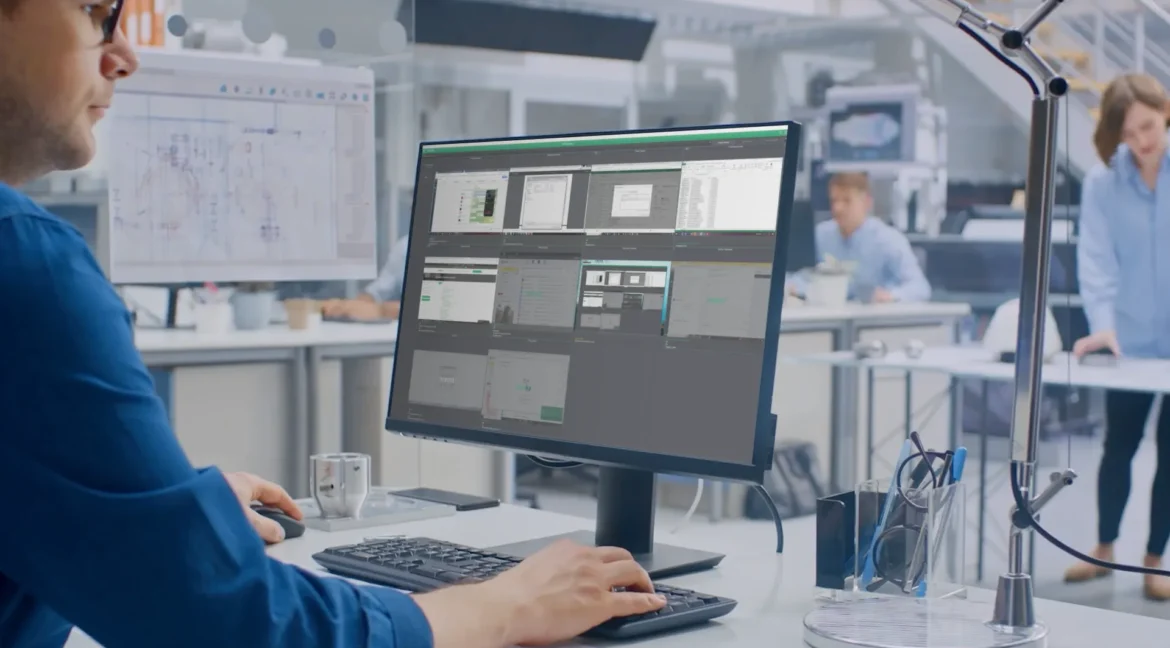Employee Monitoring Software
1. Introduction
- Brief introduction to the evolving workplace and the need for effective management tools.
- Introduction to Employee Monitoring Software and its growing importance.
2. Employee Monitoring Software Overview
- Definition of Employee Monitoring Software.
- Role in modern businesses.
- Significance in improving productivity, security, and compliance.
3. Key Features ( time tracking software )
- Time Tracking: Monitoring hours worked and productivity.
- Screen Monitoring: Keeping an eye on employees’ screens for real-time insight.
- Activity Logging: Recording activities for accountability.
- Reporting: Generating detailed reports for analysis and decision-making.
- Enhancements to management and decision-making through these features.
4. Benefits
- Increased Productivity: More efficient work habits.
- Reduced Operational Costs: Identifying and eliminating inefficiencies.
- Improved Remote Work Management: Enhanced oversight for remote teams.
- Benefits for both employers and employees.
5. Compliance and Privacy
- Addressing privacy concerns.
- Ensuring compliance with data protection laws.
- Ethical and legal use of Employee Monitoring Software.
6. Use Cases
- Real-world examples from various industries.
- Remote work management.
- Project tracking.
- Time optimization.
7. Choosing the Right Software
- Guidance on selecting suitable Employee Monitoring Software.
- Factors to consider: scalability, integrations, user-friendliness.
8. Implementation
- Best practices for implementation within an organization.
- Importance of clear communication with employees.
9. Trends and Future Outlook
- Current trends in Employee Monitoring Software.
- Emerging technologies.
- Evolution to meet changing work environments.
10. Conclusion
- Recap of the benefits and importance of Employee Monitoring Software.
- Encouragement to consider implementing such tools for enhanced productivity and compliance.
Employee Monitoring Software
Introduction
In today’s rapidly evolving workplace, managing employee productivity and ensuring security have become more critical than ever. With the rise of remote work and digital transformation, businesses need robust tools to keep operations running smoothly. This is where Employee Monitoring Software comes into play, offering solutions that help employers monitor, manage, and optimize their workforce effectively.
Employee Monitoring Software Overview
Employee Monitoring Software refers to tools designed to track and manage employees’ activities and productivity. These tools play a vital role in modern businesses by providing insights that help improve productivity, enhance security, and ensure compliance with various regulations. By leveraging such software, companies can gain a clearer understanding of how work is being performed, identify bottlenecks, and take proactive measures to enhance overall efficiency.
Key Features
Employee Monitoring Software comes packed with features that cater to various aspects of workforce management:
- Time Tracking: This feature allows employers to monitor the hours worked by employees, ensuring accurate payroll and identifying productivity patterns.
- Screen Monitoring: By observing employees’ screens in real-time, managers can gain insights into work habits and identify any non-work-related activities.
- Activity Logging: This involves recording all activities performed on company devices, providing a comprehensive view of employee actions.
- Reporting: Detailed reports generated by the software offer valuable data for analysis, helping in strategic decision-making and performance reviews.
These features collectively enhance management capabilities and support better decision-making, ultimately driving business success.
Benefits
Implementing Employee Monitoring Software offers numerous benefits for both employers and employees:
- Increased Productivity: By identifying inefficiencies and non-productive behaviors, the software helps in fostering a more focused and productive work environment.
- Reduced Operational Costs: Monitoring tools can pinpoint areas of wastage, enabling companies to cut down unnecessary expenses.
- Improved Remote Work Management: With remote work becoming more common, these tools provide the oversight needed to manage remote teams effectively, ensuring that work is being done efficiently.
- Data loss prevention software
Employees also benefit from clear expectations and structured work environments, which can lead to higher job satisfaction and performance.
Compliance and Privacy
One of the major concerns regarding Employee Monitoring Software is privacy. It’s crucial to ensure that the software is used ethically and in compliance with data protection laws. Companies must be transparent about their monitoring practices and ensure that employees are aware of what is being monitored and why. By doing so, businesses can maintain trust and avoid legal pitfalls.
Use Cases
Various industries have successfully implemented Employee Monitoring Software to enhance their operations:
- Remote Work Management: Companies with remote teams use monitoring tools to ensure productivity and accountability.
- Project Tracking: Businesses can track the progress of projects in real-time, ensuring timely delivery and identifying any potential delays.
- Time Optimization: By analyzing how time is spent, companies can optimize workflows and improve overall efficiency.
Choosing the Right Software
Selecting the right Employee Monitoring Software is crucial for achieving desired outcomes. Factors to consider include:
- Scalability: The software should be able to grow with the business.
- Integrations: Compatibility with existing tools and systems is essential.
- User-Friendliness: The software should be easy to use for both managers and employees.
Implementation
Effective implementation of Employee Monitoring Software involves several best practices:
- Clear Communication: It’s important to communicate the purpose and benefits of the software to employees, addressing any concerns they may have.
- Training: Providing adequate training ensures that all users can effectively utilize the software.
- Feedback: Regular feedback from employees can help in refining the use of the software and addressing any issues that arise.
Trends and Future Outlook
The landscape of Employee Monitoring Software is constantly evolving. Current trends include the integration of artificial intelligence and machine learning to provide deeper insights and predictive analytics. As work environments continue to change, these tools are adapting to offer more sophisticated features that cater to the needs of modern businesses.
Conclusion
Employee Monitoring Software is a powerful tool that offers significant benefits in terms of productivity, security, and compliance. By choosing the right software and implementing it effectively, businesses can optimize their operations and create a more efficient and accountable work environment. As the workplace continues to evolve, these tools will become increasingly important in helping companies stay competitive and agile.
